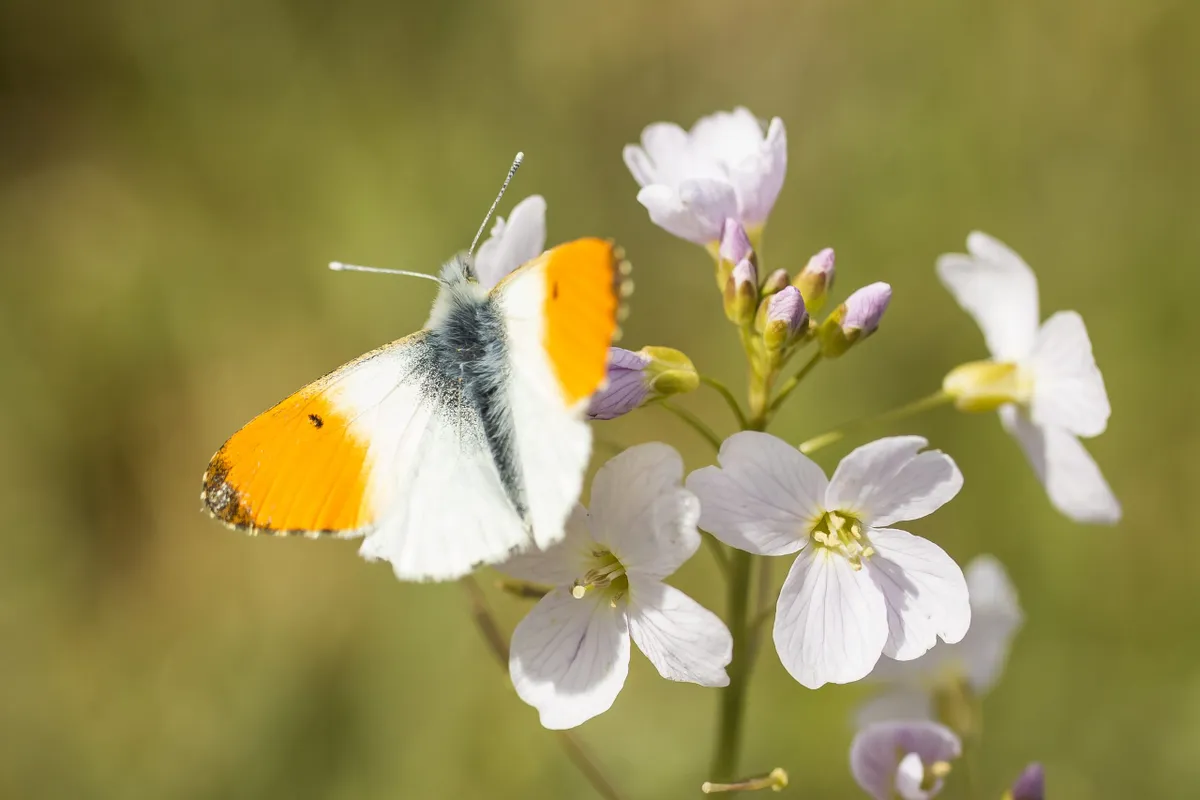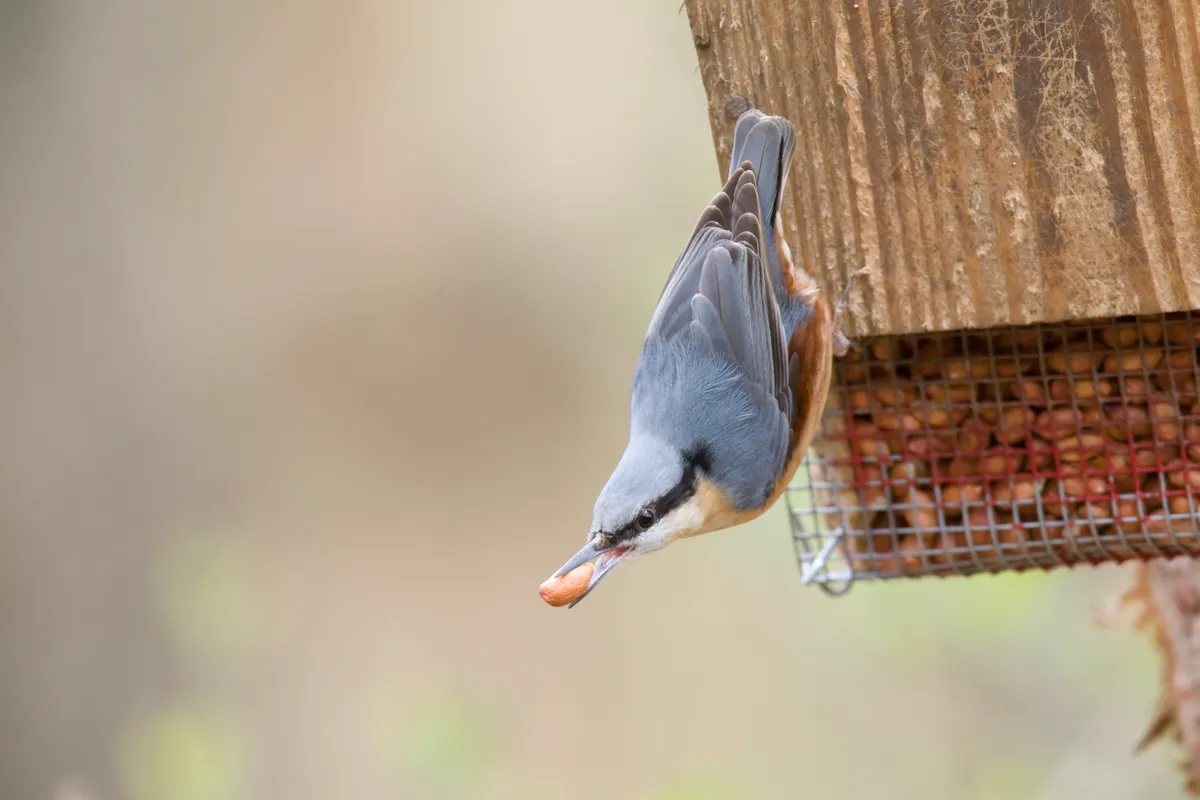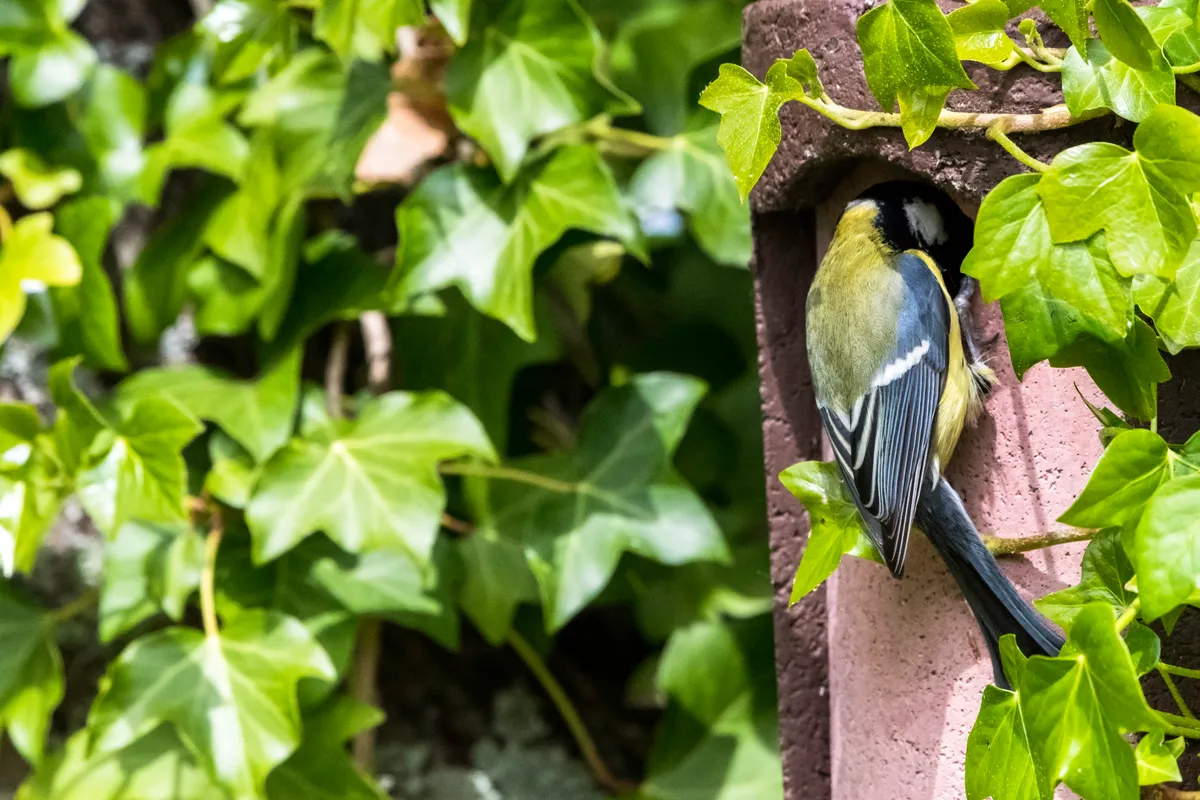The great joy of wildlife gardening is that it gives you the chance to get to know many common British species. Having regular wildlife visitors enables you to learn more about their behaviour and witness the trials and tribulations of their daily lives.
Even though I have studied foxes for 40 years, I still get an immense buzz every time the animals that I know so well reappear in my garden.
And it’s not just foxes that provide interest. I always look forward to seeing frogs return to my pond, the emergence of the first newts, slow worms basking in the sun, swarms of hoverflies hanging in the air and the occasional bat skimming overhead.
I also love watching dragonflies emerge and monitoring orange-tip caterpillars on my jack-by-the-hedge. These small, everyday events are as enjoyable as seeing a rare species in a remote part of the world.

Let’s start with an overview of some simple things you can do to improve your backyard for wildlife – with luck, you’ll soon be welcoming everything from humble beetles to charismatic birds of prey.
1
Let the soil settle
To increase populations of earthworms and beetle larvae, including cockchafers, don’t dig your garden soil unless you’re planting. Lay compost on top to provide habitat for invertebrates and foraging for blackbirds and robins.
2
Create corridors
Plant up bare ground and open areas to connect all parts of your garden. This will encourage invertebrates and young frogs and newts, such as the smooth newt, to move around.
Glades, flowerbeds and marshy areas planted with different species will all create cover and ensure a constant supply of wildflowers over the year.
3
Help pollinators
“It’s easy enough to plant species that butterflies like to feed on, but you need to do more than that to support your local populations,” says Butterfly Conservation’s Richard Fox.
“Having a range of nectar-rich plants will bring local butterflies to your garden, but you also need to think about providing the habitat and foods for caterpillars that are likely to live there. It’s best to concentrate on species that already visit, perhaps the holly blue, brimstone and orange-tip, rather than trying to attract butterflies from further afield.”
- How to make a butterfly-friendly garden
- Top plants for pollinators in your wildlife garden
- How to sow a wildflower mini meadow
- How to make your own butterfly feeder
“There are certain species of wild bee that are now more commonly found in back yards,” says Anthony McCluskey from the Bumblebee Conservation Trust.
“A well-thought-out garden can provide nest sites and food for bees during their active period from March until October.”
4
Feed the birds
Regularly provide a diversity of food to attract a range of birds, such as greenfinches. The number of visitors will build up over the years. Install plastic domes to prevent grey squirrels from raiding your feeders.

5
Create nesting spaces for birds
If you don't have suitable trees or hedges for birds to nest in, or want to supplement them, put up nestboxes for birds to use.

6
Create a garden glade
Sow woodland flowers, such as bluebells and foxgloves, in succession under trees – this will provide shelter for invertebrates, frogs and slow worms. In late summer, mow and mulch with leaf mould.
7
Stack up your sticks
Put logs and stickpiles under bushes and around garden edges to provide refuges for a host of wildlife. Grow ivy or place sods of earth on top for humidity. Vertical, half-buried logs (‘stumperies’) in shady areas are good for ferns and invertebrates, such as woodlice.
8
Love your lawn
Keep the centre of your lawn short so badgers, foxes and birds can forage for grubs. Leave the edges long to create cover for invertebrates.
Your lawn is a surprisingly rich source of food for a wide range of animals. Spring is the best time to venture outside and see who’s using your lawn as a dinner table. Go out after dark with a torch on a warm, still evening or when there’s a soft drizzle and you’re sure to find earthworms, cutworms and slugs feeding.
On a good night, foxes, badgers and hedgehogs quarter the grass in search of prey, while slow worms hunt small grey slugs (their favourite food) in the longer grass at the edges. Autumn is also a good time, so keep this guide handy until later in the year.
How your lawn provides a feast for different species
Lawns abound with a variety of slugs, but it is the small, light grey ones
that are favoured by hedgehogs and slow-worms.
Earthworms
come to the surface to feed on leaves (which are dragged into their burrows) and to mate.
The larvae of noctuid moths are known as cutworms. They feed on grass roots in your lawn. These caterpillars are a favourite snack of foxes, badgers and hedgehogs, while the adult moths are mostly eaten by foxes.
Leatherjackets are the larvae of craneflies or daddy-long-legs. Foxes relish both larvae and adults, and on a good laying night in the autumn will hoover up hundreds of adults.
Both badgers and foxes grab worms on the surface of the lawn. If the worm still has its tail in its burrow, the badger may dig a divot out of the lawn to free it. After a good night’s worming, it looks like a bad golfer has been practising on your lawn.
Badgers can dig large holes when they are after wasps’ nests. They leave a large crater containing larvae and bits of honeycomb with a few desultory wasps buzzing around.
Starlings (and many other birds) probe lawns to reach leatherjackets and other grubs, leaving neat little holes. A large flock can leave hundreds of holes before flying to the next patch.
Green woodpeckers leave larger holes when digging into ants’ nests in lawns.
9
Build ponds
If space permits, create more than one pond for diversity. A small ornamental pond on the patio will be too shallow to attract newts and dragonflies, such as the common hawker, but the survival rate for tadpoles will be higher.

10
Keep things varied
Avoid straight edges in your garden. This will create a range of temperatures and varying patches of sunshine throughout the day, and reduce the effects of wind.
Irregular outlines will enhance the overall diversity of your garden habitat for insects, allowing butterflies, such as small tortoiseshells, to maintain a succession of territories throughout the day.
11
Help your hedges
Wait until winter to cut your hedges so you don’t disturb nesting birds or impede growth. Hedges should comprise a mix of native shrub species, such as hawthorn, to provide food for invertebrates.
BRINGING WILDLIFE TO URBAN AREAS
- Do not expect to attract lots of rare species to your garden, especially if you live in a city. Few species are able to access urban areas, however appealing your garden may be.
- The one exception is birds, which fly between good gardens outside the breeding season. Feeding birds in your garden is extremely beneficial – a recent study showed that birds fed over the winter bred earlier the next spring and fledged more young.
- Your chances of seeing badgers and hedgehogs decline the further away you are from open areas. Even attracting foxes and grey squirrels, both of which are well adapted to living in built-up areas, is harder in more urbanised regions.
- Life in towns and cities poses problems for even the most adaptable species. Urban birds, for instance, have to sing at night in noisier areas because their song is drowned out during the day.
- Do not view wildlife gardens as compensation for losses in the countryside. They are a habitat in their own right, colonised by a limited range of species, and provide a great opportunity for watching wildlife and seeing how our animals adapt to urban life.
STEVE'S TOP TIPS FOR A WILDLIFE GARDEN
- Don’t be too ambitious
You can’t recreate natural habitats, such as bluebell woods. Even if you tried, the native bluebells would probably hybridise with the Spanish varieties in nearby gardens. So be realistic. - Think small
It’s easy to encourage several hundred invertebrate species to a medium-sized town garden, and these will give endless enjoyment. Concentrate on invertebrates first – larger species will follow in time. - Balance wildlife with your needs
Wildlife and practicality are not incompatible. A lawn for children can still be rich in herbs such as white clover, self-heal and birds-foot trefoil, which will attract bees and hoverflies and provide good foraging habitat for starlings and hedgehogs. - Plan slowly
Walk around your neighbourhood at night to see if there are any tawny owls, foxes, badgers or hedgehogs. If there are, make your garden more attractive to them. Find out which butterflies are using other gardens and grow their favourite foodplants. - Don’t try to grow difficult plants
If something isn’t thriving, replace it. Don’t obsess about native species. Though they are good foodplants for many animals, particularly caterpillars, many garden flowers, such as lavender, are great for nectar and may flower for longer. - Monitor your wildlife
Make bird lists, keep mammal records, carry out invertebrate counts and note the dates of any first sightings. You will soon see the changes you have achieved.
Main image: Great spotted woodpecker on feeder. © Chris Smith